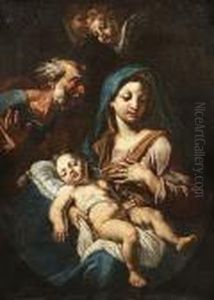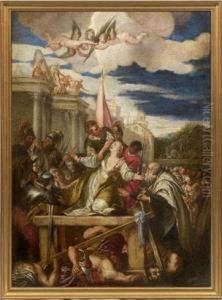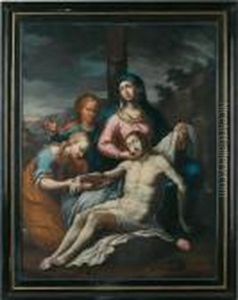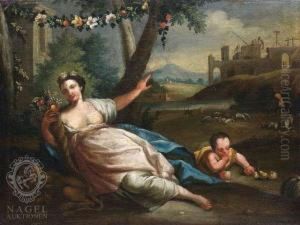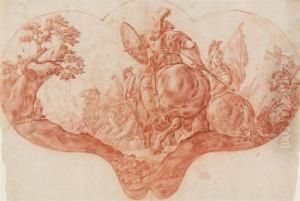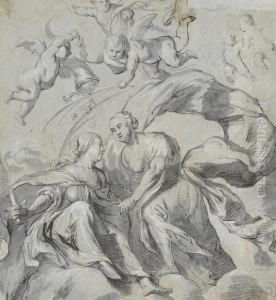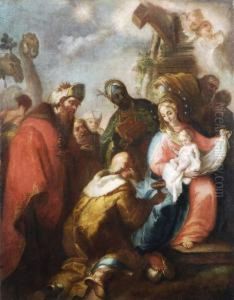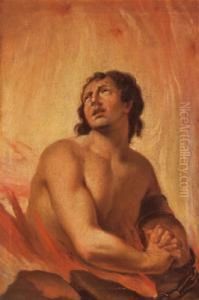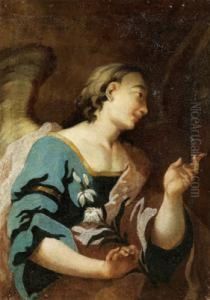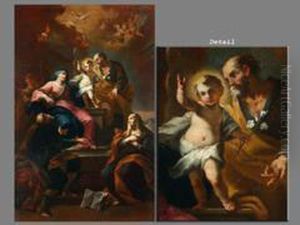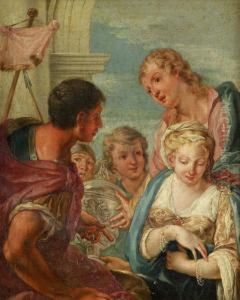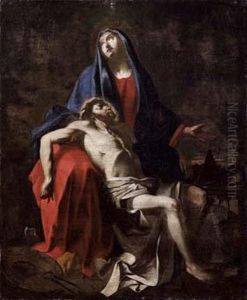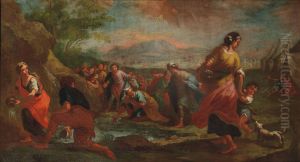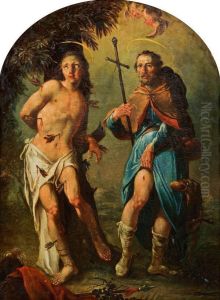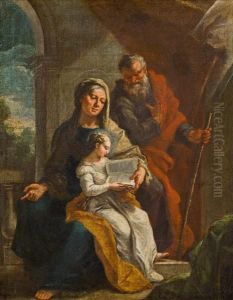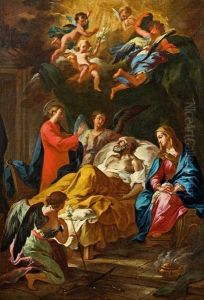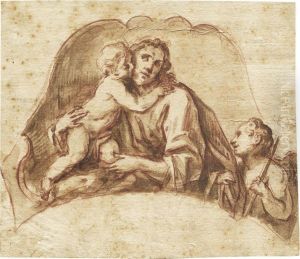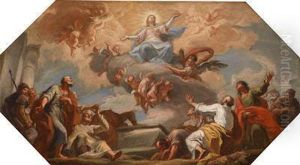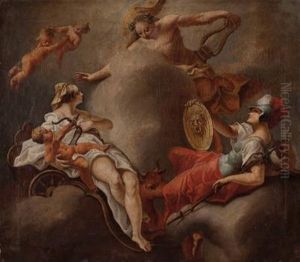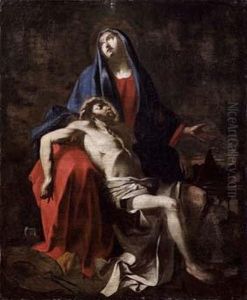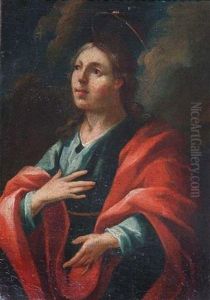Martino Hohenberg Altomonte Paintings
Martino Altomonte, also known as Martin Hohenberg, was a prominent Baroque painter who was born on May 21, 1657, in Warsaw, Poland. Coming from a family of artists, he was the son of an Italian painter who had moved to Poland. His father, who was also his first teacher, provided him with a solid foundation in painting.
Altomonte spent his early years traveling and studying art throughout Europe. He was primarily active in Austria, where he became a significant figure in the Baroque artistic scene. After leaving Poland, he settled in Italy for a time, studying under the guidance of prominent painters of the era. His work was influenced by the grandeur and dramatic expressiveness typical of the Baroque movement, and he was particularly known for his vibrant use of color and adept handling of religious and mythological subjects.
In 1688, Altomonte moved to Vienna, where he became a court painter to Emperor Leopold I. His role at the court significantly boosted his career, affording him numerous commissions for religious works in churches and monasteries, as well as for the imperial family. One of his most notable works from this period is the ceiling fresco in the library of the Melk Abbey in Austria, which is considered a masterpiece of Baroque art.
Throughout his life, Altomonte was also a teacher and influenced a number of other artists. His style evolved over the years, and in his later works, he began to incorporate more light and a softer palette into his compositions, which some art historians see as a precursor to the Rococo style that would follow the Baroque period.
Martino Altomonte continued to paint until his old age and passed away on October 14, 1745, in Vienna. His legacy is characterized by his contribution to the development of Baroque painting in Central Europe, and his works are still admired today for their energy, color, and dramatic intensity.
